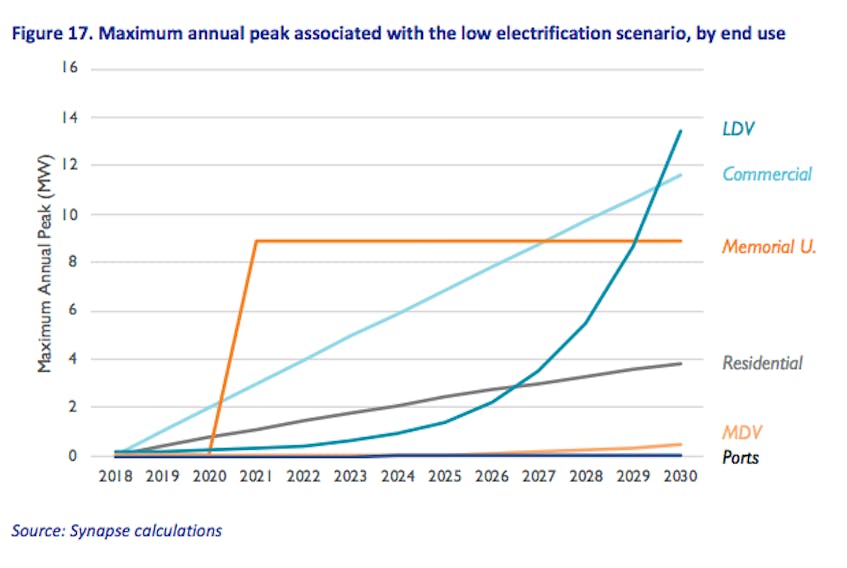ST. JOHN'S, N.L. — The Public Utilities Board (PUB) on Tuesday released two reports commissioned as part of the Reference on Rate Mitigation Options and Impacts Relating to the Muskrat Falls Project.
One of the reports, by Synapse Energy Economics Inc., called “Phase Two Final Report on Muskrat Falls Project Rate Mitigation,” looked at rate mitigation approaches.
They included: options for cost savings and revenue opportunities through export market sales, energy efficiency, in-province electrification and rate design approaches after the Muskrat Falls dam begins producing power.
Synapse Energy Economics Inc. was engaged by the PUB in late September 2018.
“Our scope of work was to address certain factors underlying the Government of Newfoundland and Labrador’s reference questions concerning rate mitigation options and impacts associated with the anticipated commencement of in-service operations for the Muskrat Falls Project in 2020," the report stated.
“Phase 1 of our scope of work was completed towards the end of 2018.”
The provincial government’s reference questions sought to determine how — and to what extent — the province can mitigate the forthcoming electric rate increases for electricity customers on the Island Interconnected System (IIS) that are required to pay for the Muskrat Falls project.
A summary of conclusions from the Synapse Energy Economics Inc. report:
- High levels of policy-supported electrification combined with enhanced conservation and demand management (CDM) and use of possibly multiple forms of rate design offers the best overall rate and bill mitigation effect. Scenarios that implement these pathways show reductions in the total energy bills paid by consumers in the province by tens of millions of dollars per year by 2030.
- Electrification has the highest value mitigation opportunity because of two underlying factors: avoided oil fuel expenditures (new savings) and the effect of technological improvements (mainly cars, batteries, and heat pumps).
- CDM on the IIS complements and supports the electrification elements not only because it allows increases in export sales, but because it mitigates the peak-load-increasing effect of electrification consumption that spills into peak periods. On its own, it frees up energy for sale to export markets while simultaneously reducing future capacity expenditure needs.
- Rate design at the sectoral level can help to provide the price signals required to optimize load in the province for rate mitigation. Rate design can play an especially important role in supporting widespread electrification while minimizing increases in peak demand.
- The use of existing industrial curtailment, and the potential use of increased levels of demand response (including demand response allowed through the use of critical peak pricing tariff overlays, and/or direct load control mechanisms), is crucially important as a complement to all mitigation policies because it protects against a need for new capacity supply to meet peak load and reserve margin targets.
- Maximizing export energy sales would not best mitigate rate or bill concerns. Maximizing internal beneficial electrification first allows customers to capture oil savings, while providing revenues to help pay Muskrat Falls project fixed costs.
- Broad use of advanced metering infrastructure (AMI), to more fully implement marginal-cost-based pricing across all customers, does not appear as economically attractive as initially thought, because other means to reduce peak load or prevent increases in peak load on extreme winter days are less expensive.
- Federal government and provincial policies have a material effect of reducing cost (and jumpstarting trends) to help incentivize actions that promote sustained electrification and conservation and demand management that supports ongoing trends to capture fuel savings in heating and transportation sectors.
RELATED









